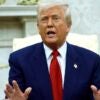Even symbolic gestures can sometimes be important. Consider “The Path to Prosperity,” drafted by Rep. Paul Ryan’s (R–Wis.) budget committee and passed by the House last week. It has no chance of becoming law, but—if it did—it would put the country on a path toward a balanced budget within a decade.
Contrast that with President Obama’s budget: It would leave the country awash in red ink, and it mustered just two votes in the House. Meanwhile, “The Democratic-controlled Senate has no plans to pass a budget plan,” USA Today dryly reports.
The Daily Signal depends on the support of readers like you. Donate now
That’s a shame, because, in a concrete way, a written budget tells the story of the United States from one year to the next. As John F. Kennedy put it, “To govern is to choose,” and by outlining that on which the government is spending taxpayer dollars, a budget explains what we’re choosing to do.
Unfortunately, the budget process has disappeared in recent years. Instead of written budgets, Congress governs by continuing resolutions. Lawmakers agree to spend money in dribs and drabs instead of looking at the big spending picture.
Sadly, this style of governance is by choice. “No legislative process can work unless legislators want it to; the failure to budget is the product of a deliberate choice,” warns Patrick Louis Knudsen in a new paper on budget process reform. Knudsen discusses several options that could improve the process.
Consider entitlements. Even when lawmakers were passing budgets, several expensive programs weren’t included: Social Security, Medicare and Medicaid grow year by year. But not because lawmakers voted on them; rather, they’re open-ended demands on the federal purse. Changing that would be a positive step. Knudsen writes:
Placing these programs on specific budget paths would largely end the favorable treatment that they receive as a result of their autopilot construction. It would constitute a major step toward restoring a comprehensive practice of budgeting, one that subjects all programs to roughly equivalent disciplines. It also would reinforce the constitutional aim of using budgeting as a means of limiting government.
Convincing lawmakers to fix the budget process won’t be an easy task. But Knudsen argues that it can be done: “Congress has demonstrated an ability to complete necessary legislative work if there is no other choice.”
It’ll be up to voters, then, to leave Congress with no choice. There are many ways to balance a budget. But actually enacting one is a necessary first step.
































